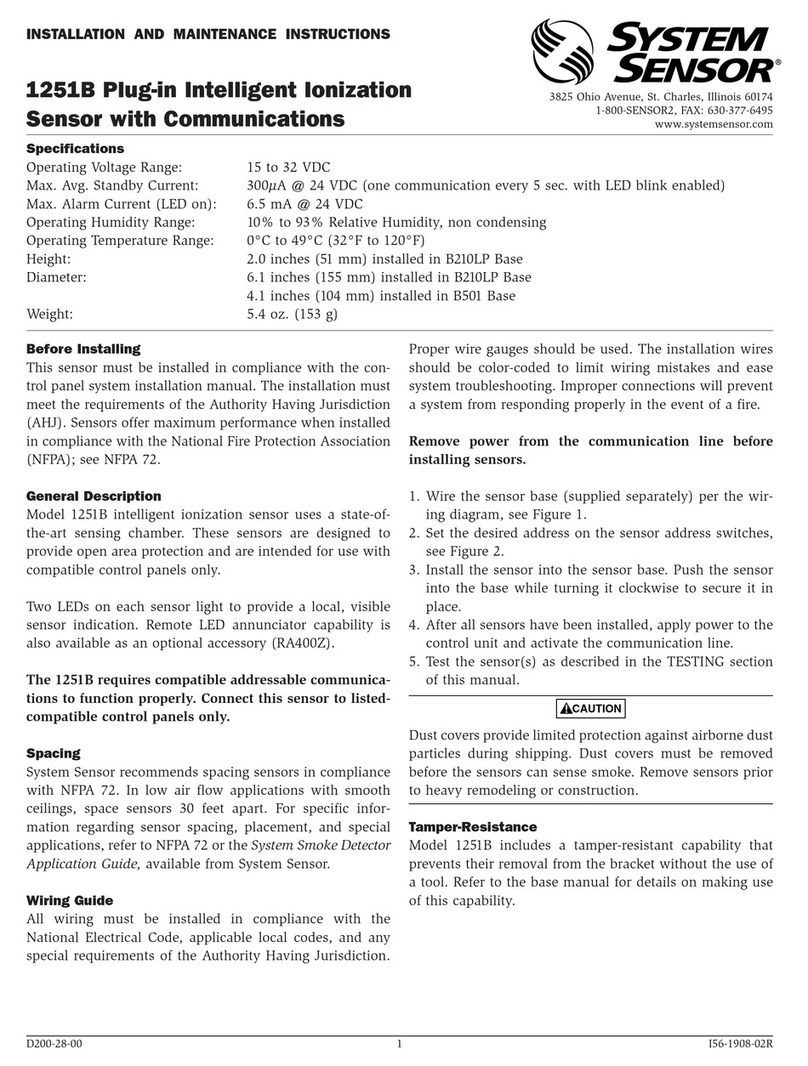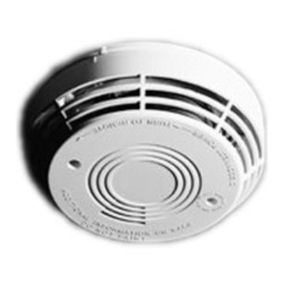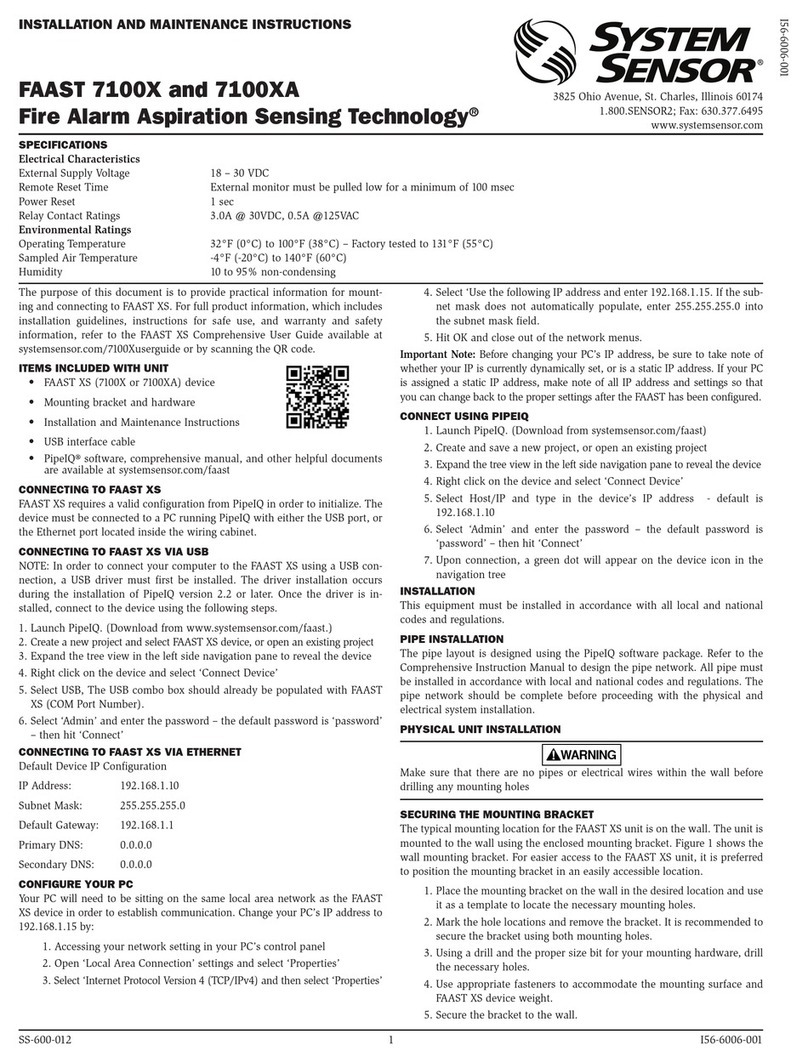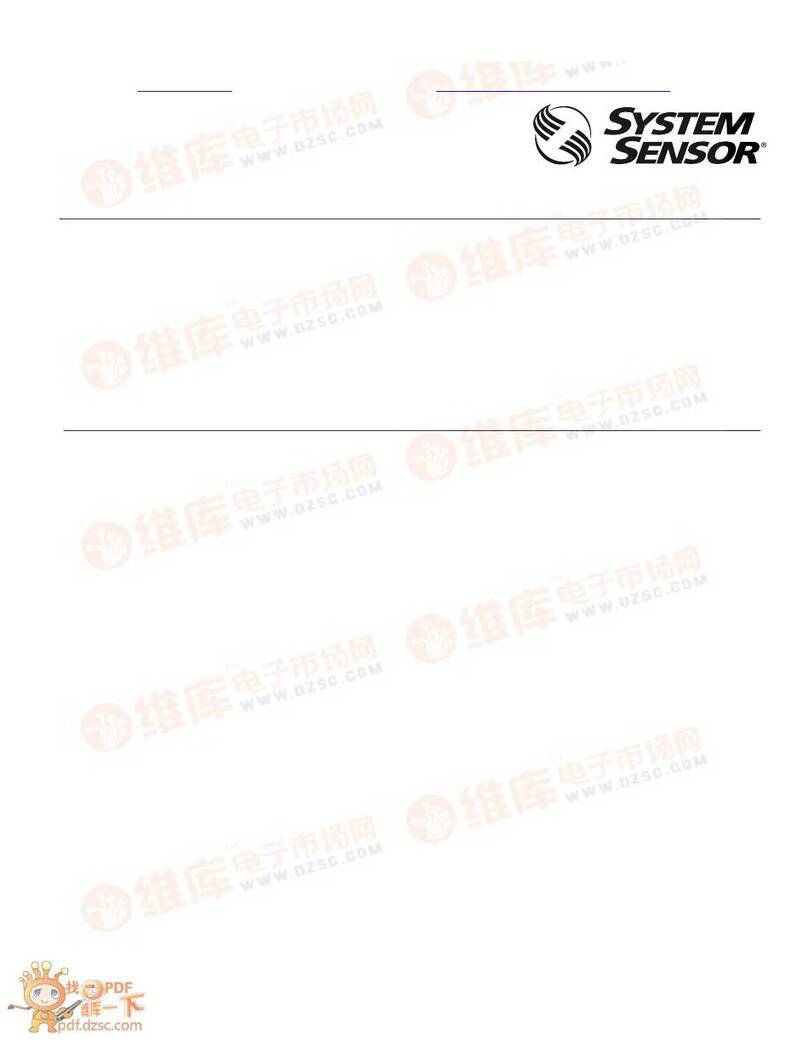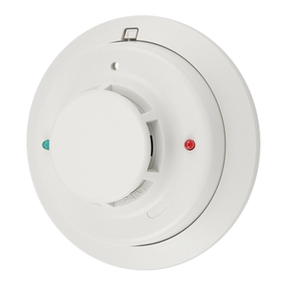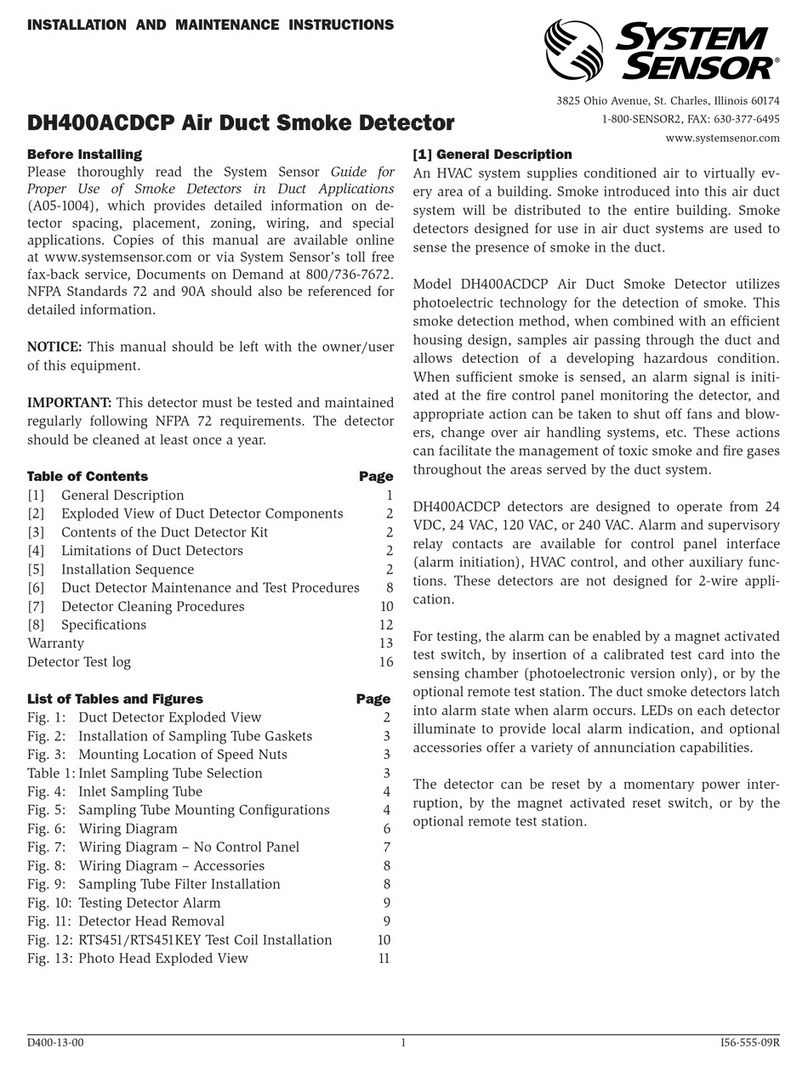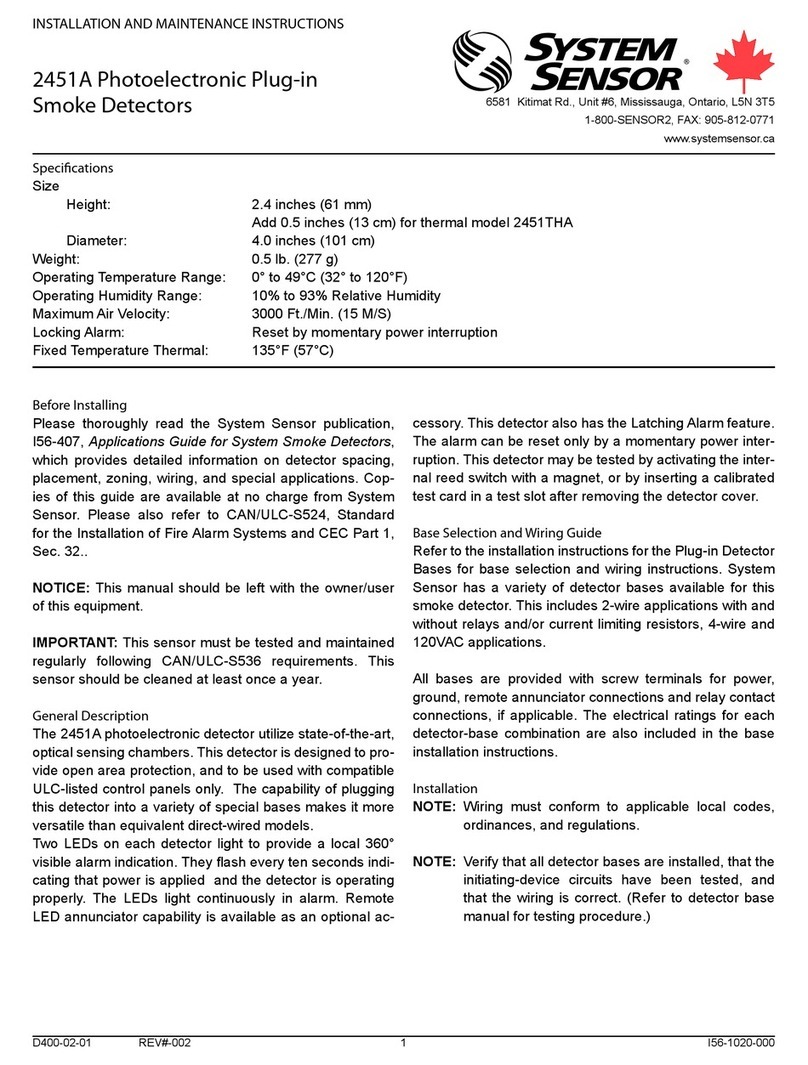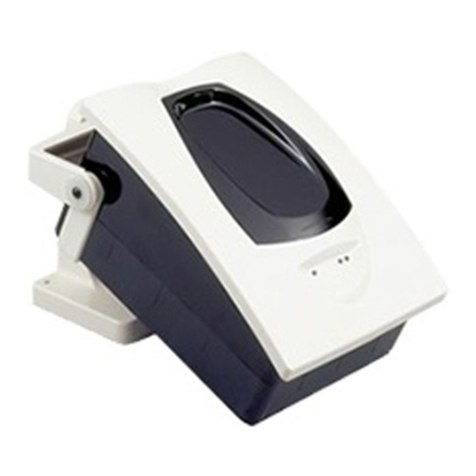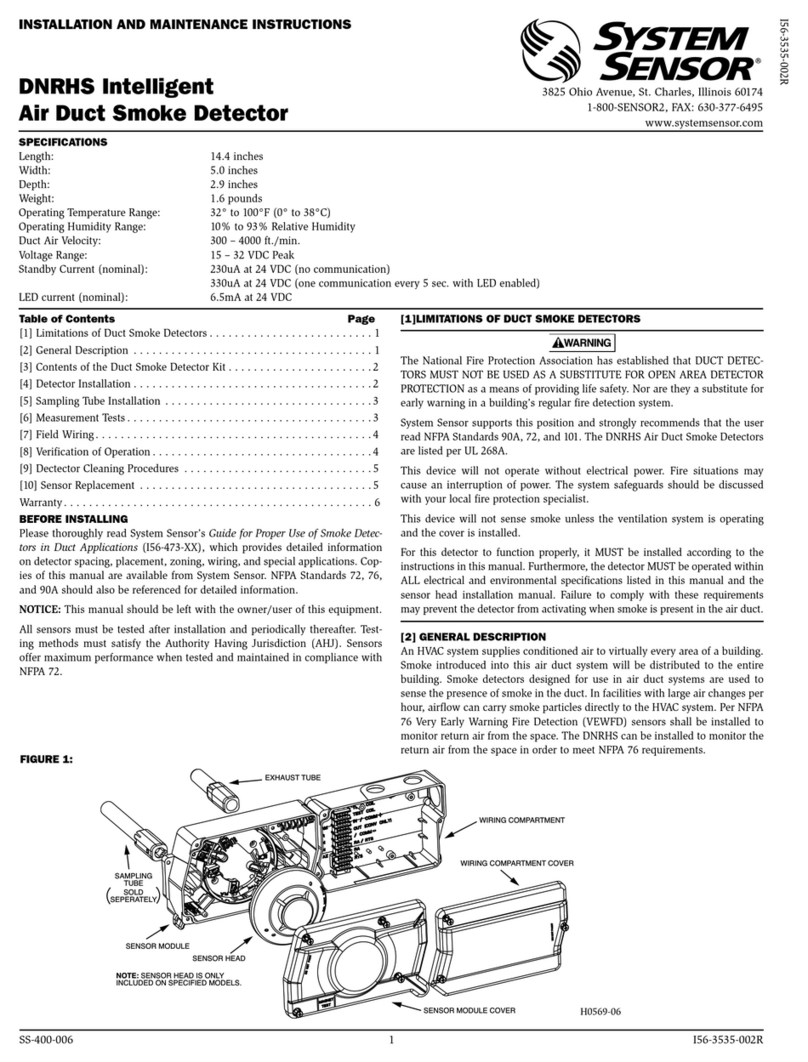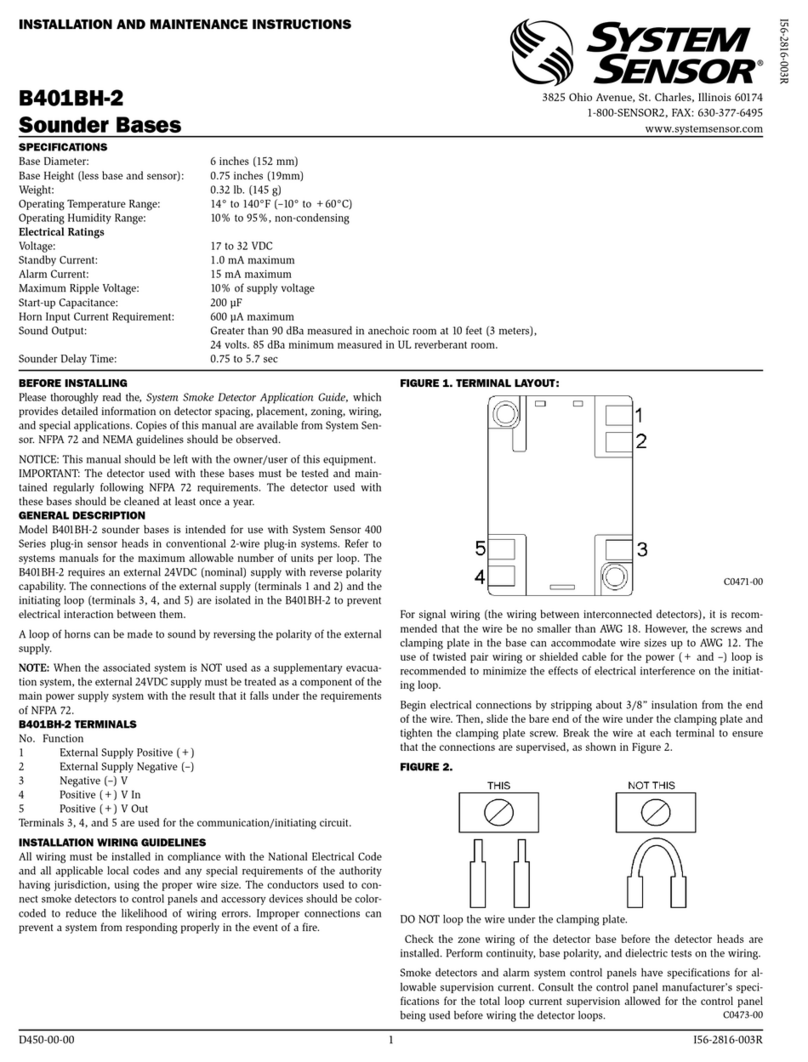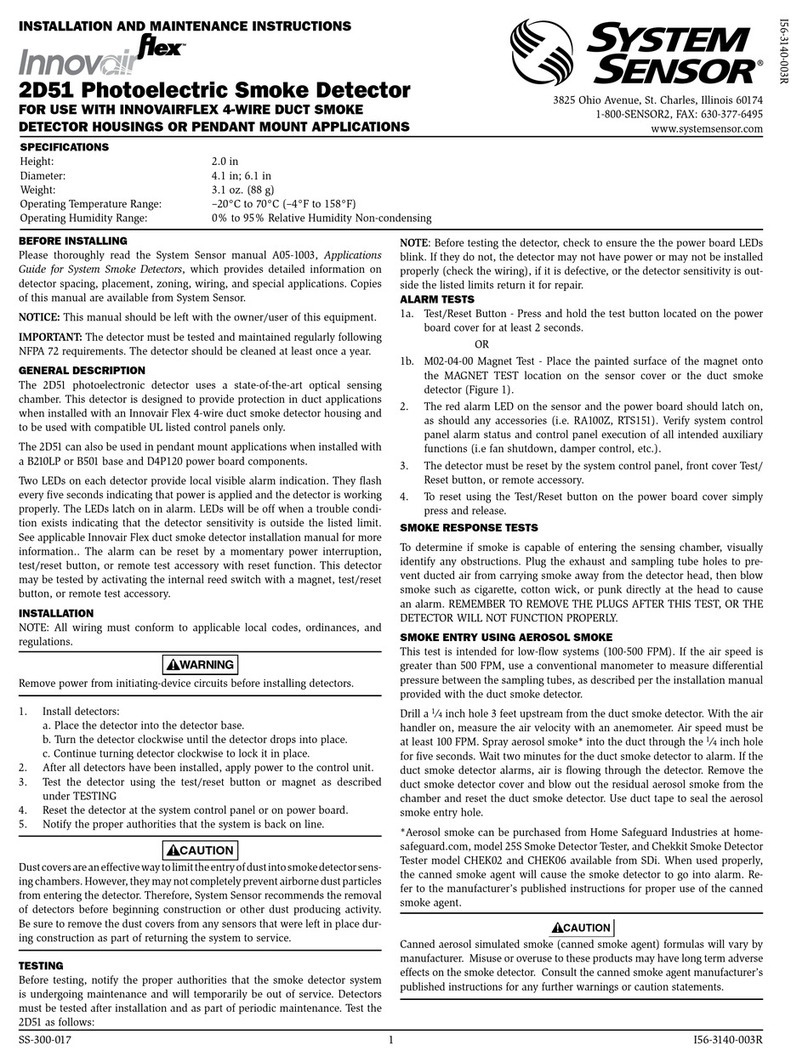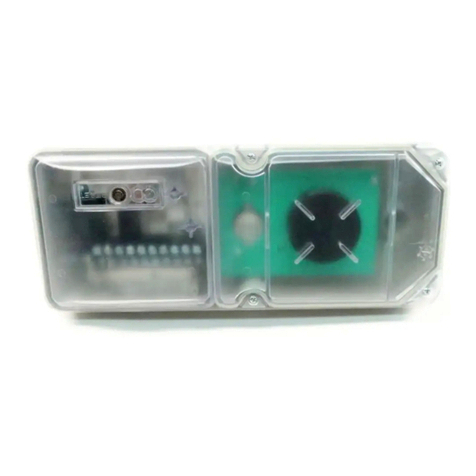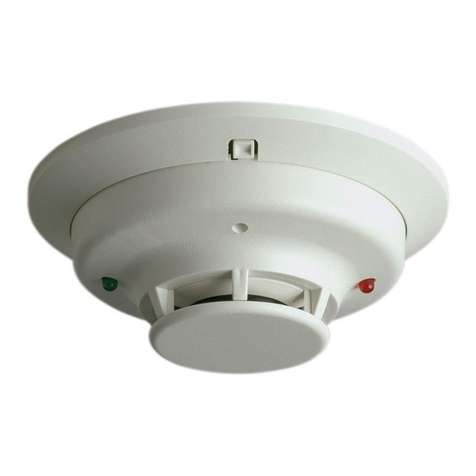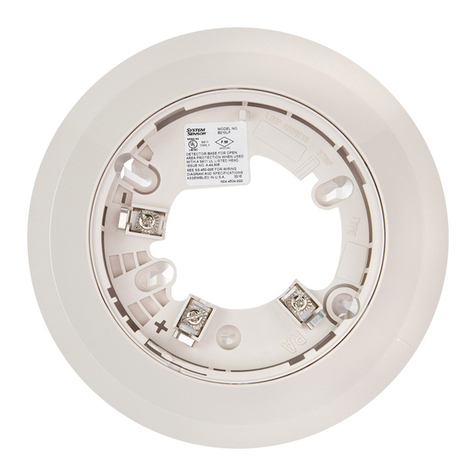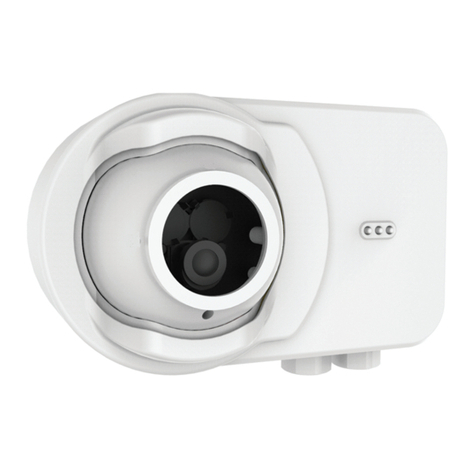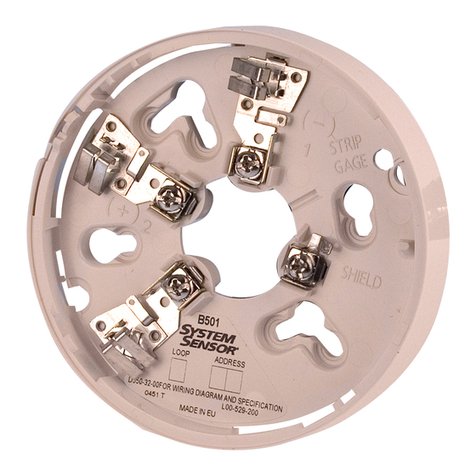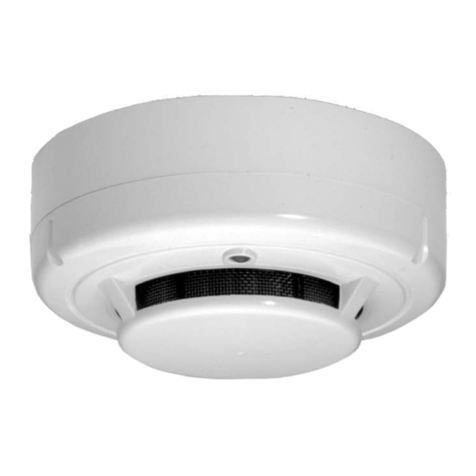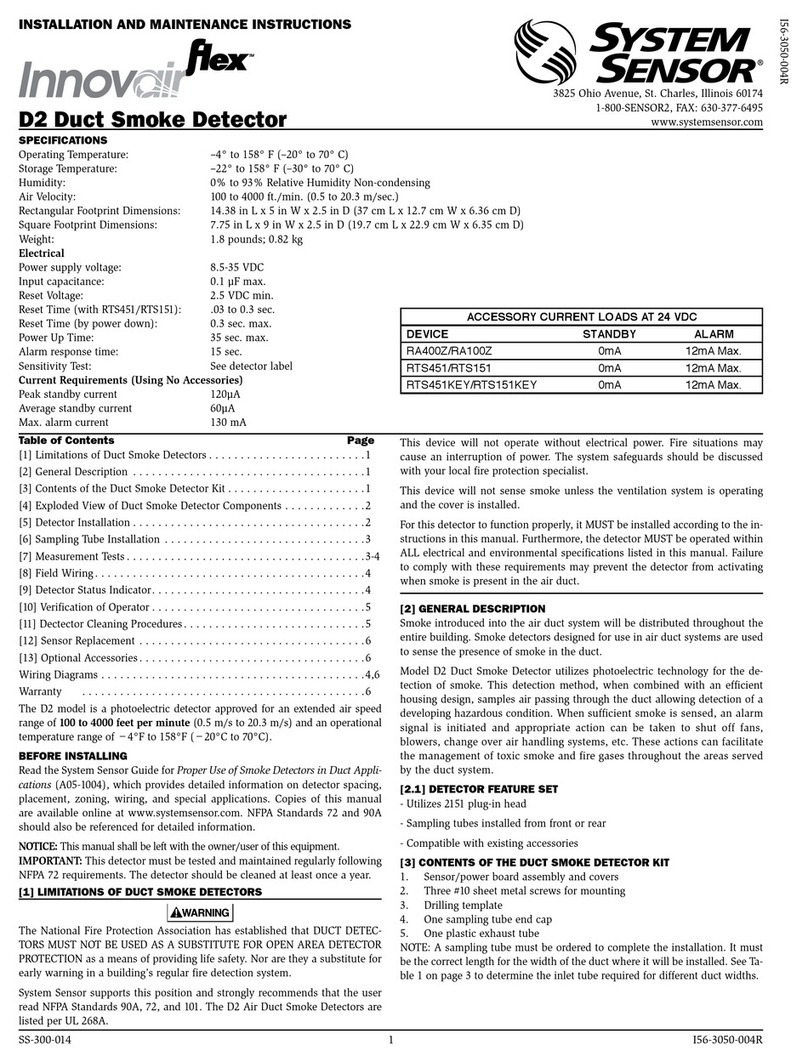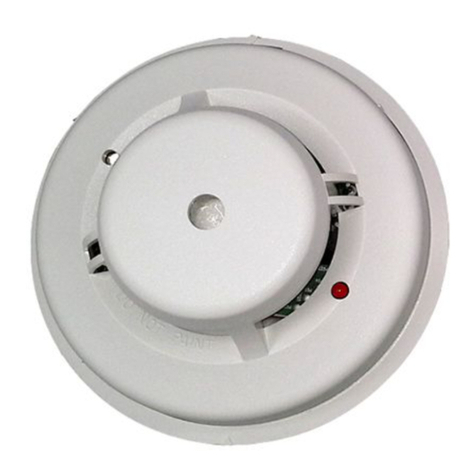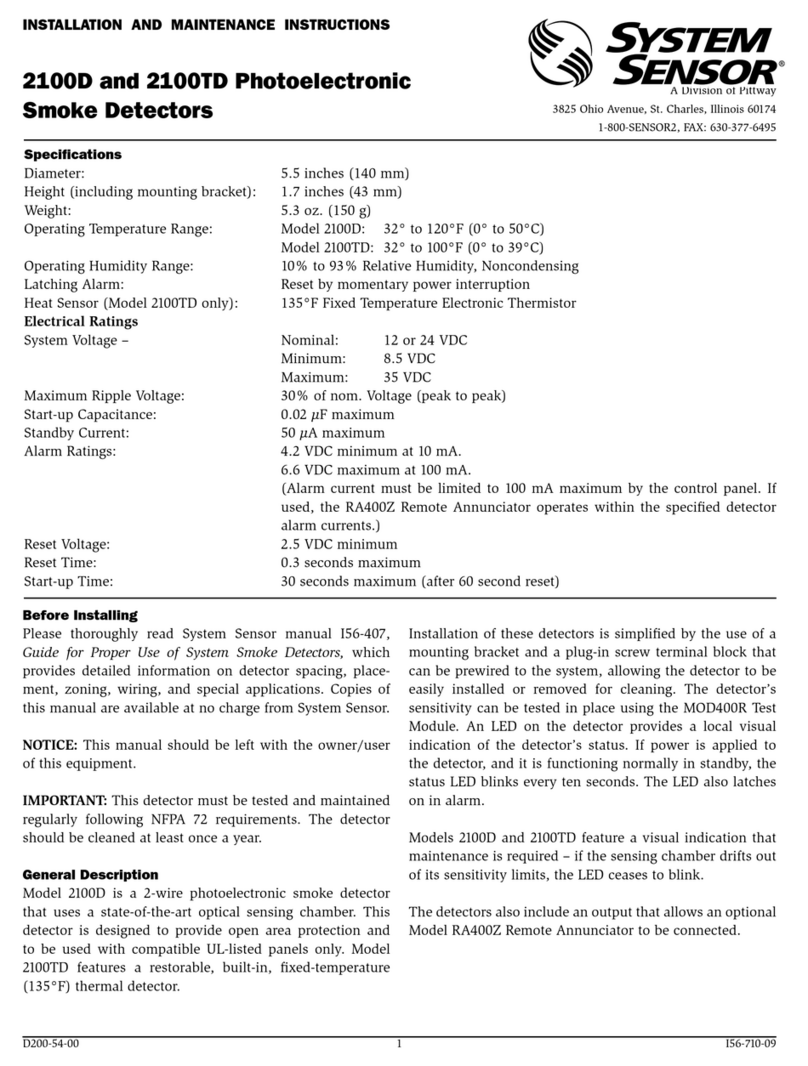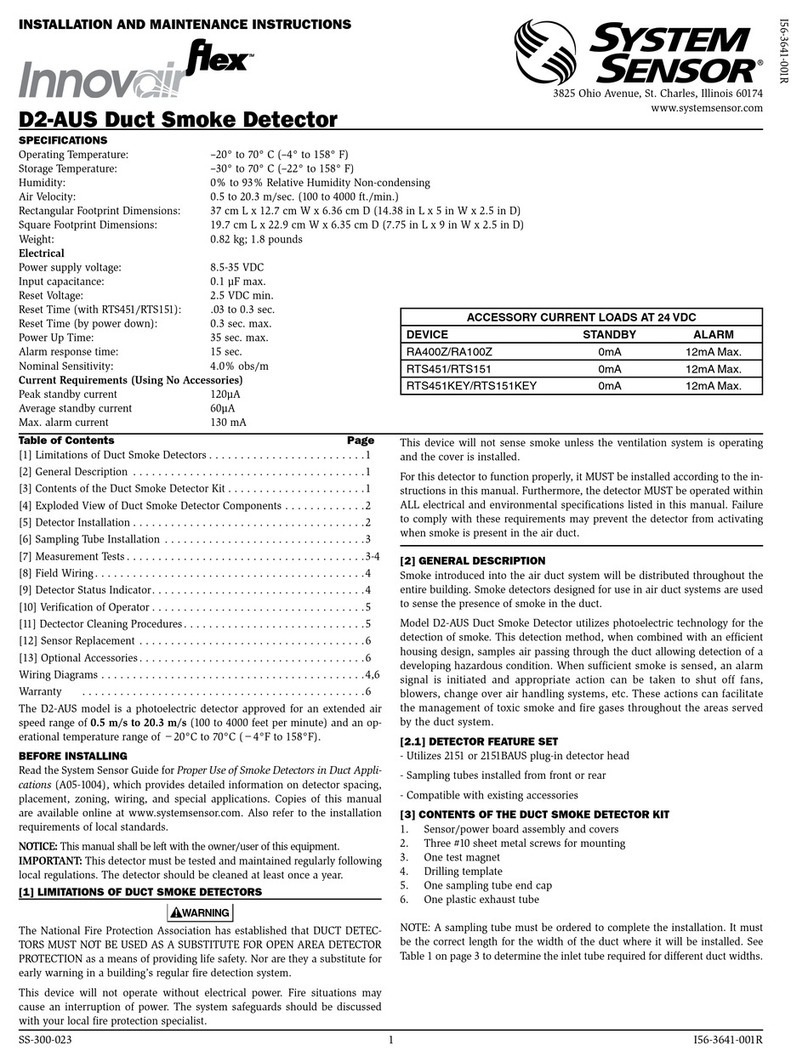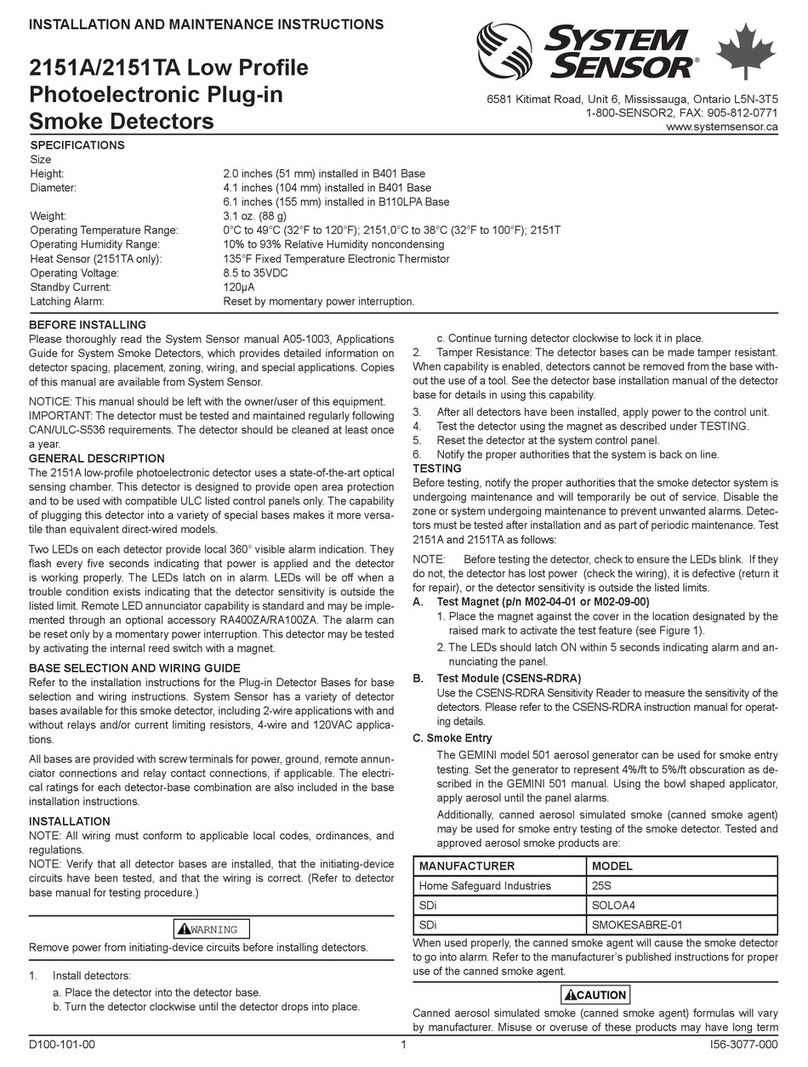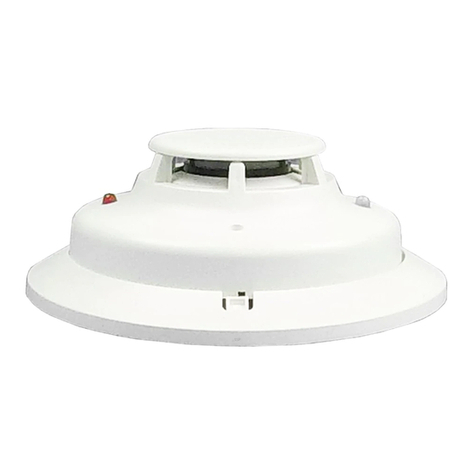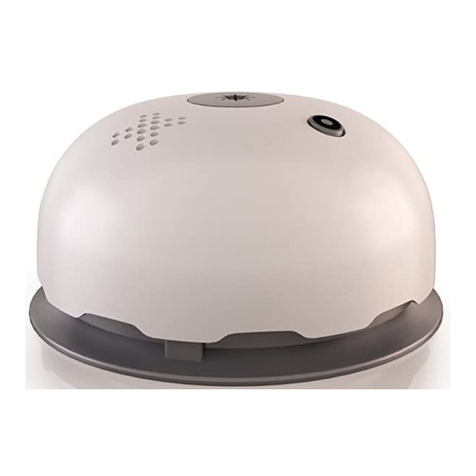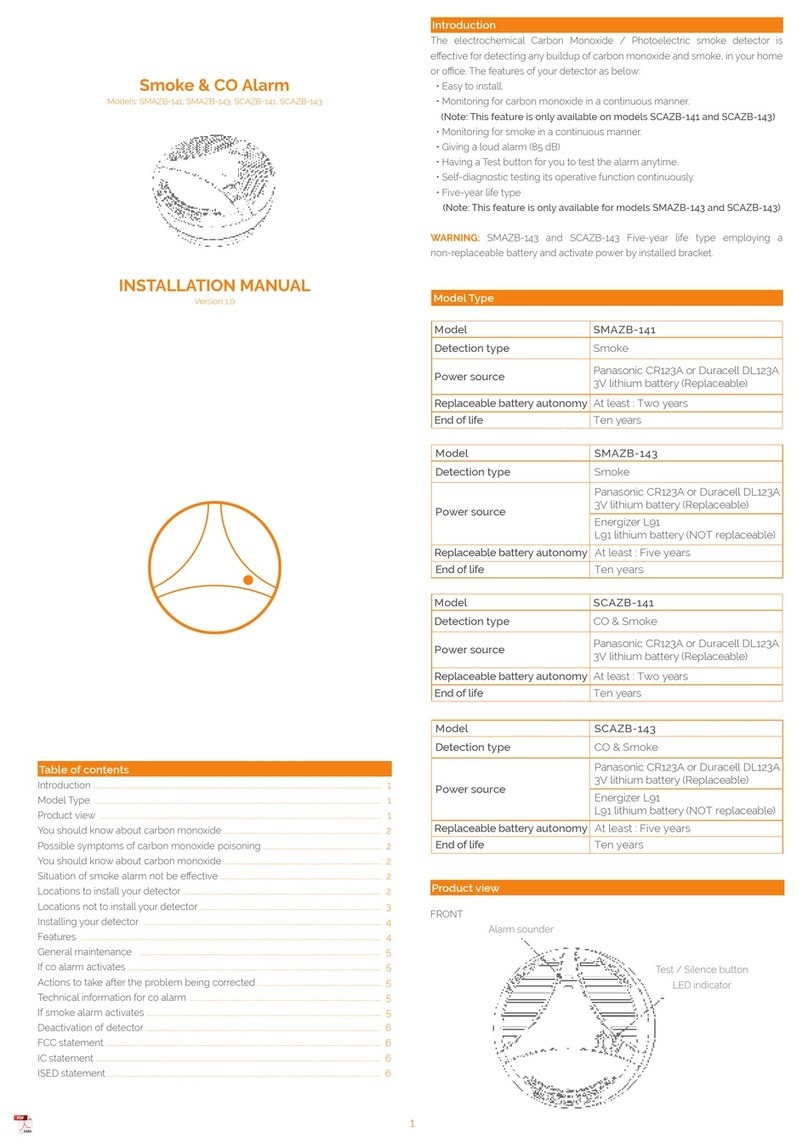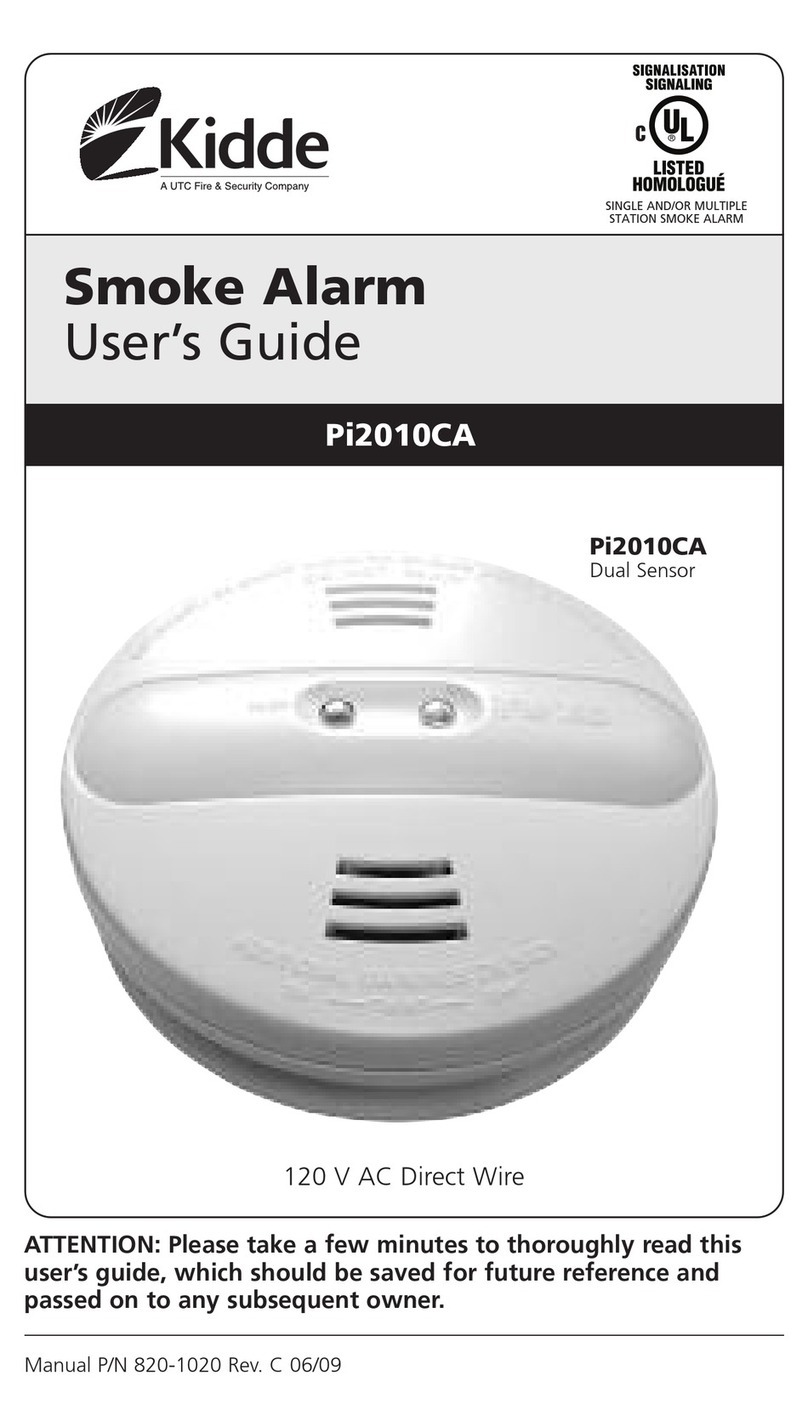
D200-63-00 3 I56-931-02
Installation
WARNING
Remove power from the control unit or initiating device cir-
cuits before installing detectors.
1. Wire the plug-in screw terminal block per Figure 3 and
plug the terminal block into the detector.
2. Align the arrows on the detector with the arrows on the
mounting bracket.
3. Rotate the detector clockwise in the mounting bracket
until it clicks into place.
4. After all detectors have been installed, apply power to
the control unit or initiating device circuits.
5. Test the detector as described in TESTING.
6. Reset the detector at the system control panel.
7. Notify the proper authorities the system is in operation.
CAUTION
Dust covers are an effective way to limit the entry of dust
into smoke detector sensing chambers. However, they may
not completely prevent airborne dust particles from enter-
ing the detector. Therefore, System Sensor recommends the
removal of detectors before beginning construction or other
dust producing activity. Be sure to remove dust covers from
any sensors that were left in place during construction as
part of returning the system to service.
A78-2564-01a
Figure 4. Top and side views showing location of test switch:
PUSH RECESSED
SWITCH WITH A
0.1″MAX. DIAMETER TOOL
,,,,,,,,,,,,,,,,,,,,,,,,,
,,,,,,,,,,,,,,,,,,,,,,,,,
,,,,,,,,,,,,,,,,,,,,,,,,,
,,,,,,,,,,,,,,,,,,,,,,,,,
,,,,,,,,,,,,,,,,,,,,,,,,,
,,,,,,,,,,,,,,,,,,,,,,,,,
,,,,,,,,,,,,,,,,,,,,,,,,,
,,,,,,,,,,,,,,,,,,,,,,,,,
,,,,,,,,,,,,,,,,,,,,,,,,,
,,,,,,,,,,,,,,,,,,,,,,,,,
,,,,,,,,,,,,,,,,,,,,,,,,,
,,,,,,,,,,,,,,,,,,,,,,,,,
,,,,,,,,,,,,,,,,,,,,,,,,,
,,,,,,,,,,,,,,,,,,,,,,,,,
A78-2564-00a
I
N
T
A
P
T
O
N
O
D
LED
TEST MODULE
SOCKET RECESSED TEST
SWITCH
Testing
NOTE: Before testing, notify the proper authorities that
the smoke detector system is undergoing mainte-
nance and, therefore, will be temporarily out of
service. Disable the zone or system undergoing
maintenance to prevent unwanted alarms.
Detectors must be tested after installation and following pe-
riodic maintenance. Test the 1112/24B and 1112/24BA as
follows:
A. Test Switch
1. A recessed test switch is located on the detector hous-
ing (See Figure 4).
2. Press and hold the recessed test switch with a 0.1 inch
maximum diameter tool such as an allen wrench or
small screwdriver.
3. The detector’s LED should light within 5 seconds.
B. Test Module (System Sensor Model No. MOD400R).
The MOD400R test module can be used with a DMM or
analog voltmeter to check the detector sensitivity as de-
scribed in the test module’s manual.
C. Smoke Entry Test
Hold a smoldering punk stick or cotton wick at the side
of the detector and gently blow smoke through the de-
tector until the unit alarms.
A detector that fails to activate with any of the above tests
should first be cleaned as outlined in MAINTENANCE. If
the detector still fails to activate, return it for repair.
Notify the proper authorities the system is back in operation.
